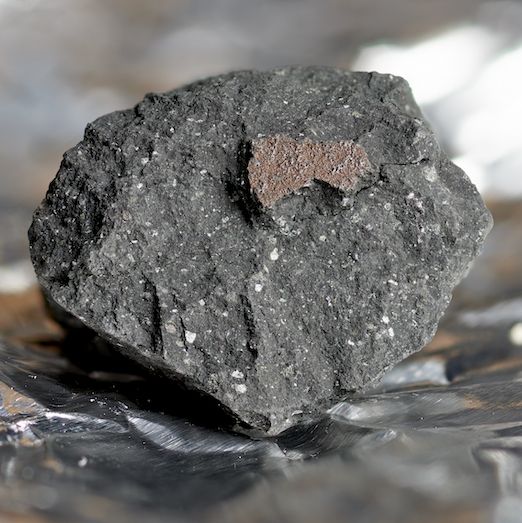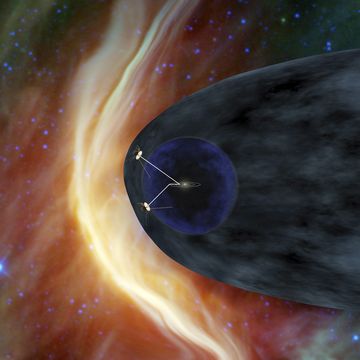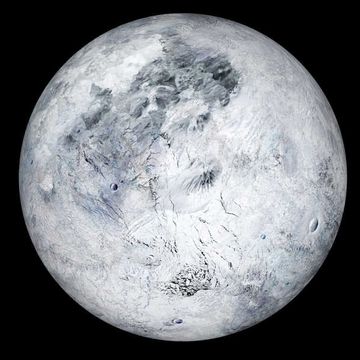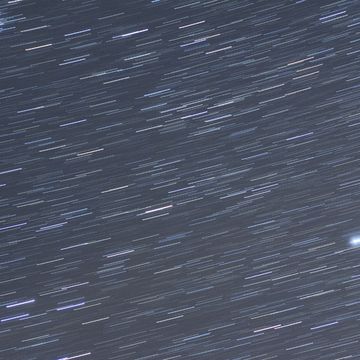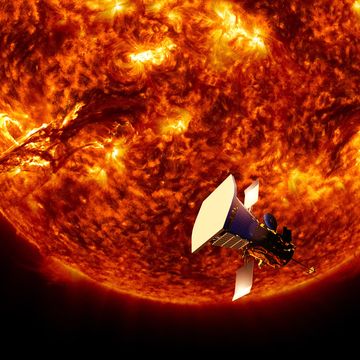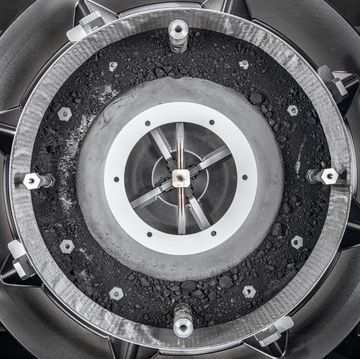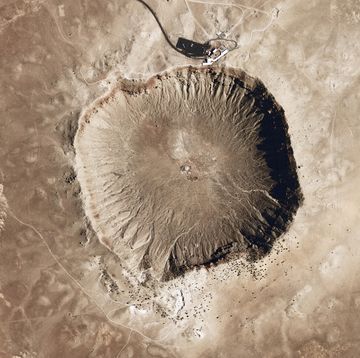- The Winchcombe meteorite is a rare find, with a similar hydrogen isotope ratio to the water on Earth.
- Recovering a meteorite within 12 hours of arrival means it is as pristine a specimen as we can get without going to space.
- Eleven percent of the meteorite’s weight comes from Earth-like water, intriguing scientists about the implications of Earth’s early composition.
Scooping up a meteorite within 12 hours of crashing turned out to be a scientific boon for researchers investigating the hydrogen makeup of this visitor from outer space. The one pound of carbonaceous chondrite plowed into the English town of Winchcombe in February 2021. Its most spectacular feature, according to the scientists? The rock’s hydrogen isotope ratio is strikingly similar to that of water on Earth.
🪐 You love the mysteries of the solar system. So do we. Let’s learn more about it together—join Pop Mech Pro.
“One of the biggest questions asked of the scientific community is how did we get here? This analysis on the Winchcombe meteorite gives insight into how the Earth came to have water, the source of so much life,” Luke Daly, University of Glasgow lecturer and and an author of the first paper on the meteorite published at Science Advances, says in a news release. “Researchers will continue to work on this specimen for years to come, unlocking more secrets into the origins of our solar system.”
Key to the research was the fact specialists from across the world could start investigating the Winchcombe meteorite within days of its fiery fall from the sky. Less than 12 hours after its entry into Earth’s atmosphere, pieces of the rock were plucked from a driveway and the surrounding area and taken to London’s Natural History Museum, away from any environmental effects that could change its analysis.
“The rapid retrieval and curation of Winchcombe make it one of the most pristine meteorites available for analysis, offering scientists a tantalizing glimpse back through time to the original composition of the solar system 4.6 billion years ago,” Ashley Key, Natural History Museum senior curator and the paper’s co-author, says in a news release. Estimates vary, but Earth is about 4.5 billion years old.
The meteorite offers a look at a rare carbonaceous chondrite, a high silicate rock containing approximately 2 percent carbon by weight. It is the first of its type to be discovered in the United Kingdom. After imaging and chemical analysis, researchers determined it contains 11 percent extraterrestrial water by weight. Most of the water is trapped in minerals created by chemical reactions between fluids and rocks on the asteroid the meteorite originated from—during what scientists believe to be the earliest formation of our solar system.
By measuring the ratio of hydrogen isotopes in the water, the team found it closely resembles the composition of water on Earth. It also contains extraterrestrial amino acids, or prebiotic molecules that are key for the creation of life. Because the meteorite was largely unmodified by Earth’s environment due to its quick retrieval, the researchers believe their findings bolster the theory that carbonaceous asteroids played a key role in bringing the ingredients of life—like water—to early Earth. This makes the Winchcombe meteorite notably different from the more common icy comets, which don’t have chemistry matching Earth’s water.
“Direct links between carbonaceous chondrites and their parent bodies in the solar system are rare,” according to the paper. “The Winchcombe meteorite is the most accurately recorded carbonaceous chondrite fall. Its pre-atmospheric orbit and cosmic-ray exposure age confirm that it arrived on Earth shortly after ejection from a primitive asteroid.”
By combining camera footage of its trajectory from the U.K. Fireball Alliance—which aims to recover fallen meteorites as soon as possible—with chemical analysis of the meteorite, researchers believe Winchcombe broke off the surface of an asteroid near Jupiter and traveled to Earth within the last million years.
“We’re still reeling from our good fortune to have such an important meteorite fall in the U.K.,” Natasha Almeida, curator of meteorites at the Natural History Museum and paper co-author, says in a news release. “The combination of such a quick recovery, careful collection, and our ongoing curation of Winchcombe in a nitrogen atmosphere means this incredibly fresh specimen will remain one of the most pristine meteorites in collections worldwide.”
Tim Newcomb is a journalist based in the Pacific Northwest. He covers stadiums, sneakers, gear, infrastructure, and more for a variety of publications, including Popular Mechanics. His favorite interviews have included sit-downs with Roger Federer in Switzerland, Kobe Bryant in Los Angeles, and Tinker Hatfield in Portland.
